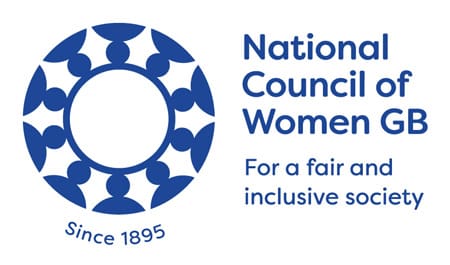NCW in Conference assembled: (a) recognizing international awareness that women are affected as much as men by the challenges facing humanity in the 21st Century, and (b) aware, too that the empowerment of women and girls is vital to the promotion of health, education, economic development and conflict resolution, calls upon Her Majesty’s Government to take the necessary steps in institutional and electoral initiatives to work towards the achievement of parity at all levels of decision-making in the United Kingdom, including Parliamentary representation.
Previous resolutions on women’s representation / gender parity
- 1920 (in Parliament)
- 1958 (on regional hospital boards)
- 1961 (on government committees) reaffirmed in 1965 and 1981
- 1966 (on national bodies and regional economic planning councils)
- 2002 (in all forms of decision making) reaffirmed in 2005
- *2006 (at all levels of decision making and representation in Parliament)
- 2009 (in Parliamentary elections)
- 2010 (in Parliament)
- 2014 (in Parliament, Cabinet positions, and Parliamentary Committees)
Why now
- Helen MacNamara’s evidence to Covid enquiry
- Statistics
- General election next year
1 Helen MacNamara
- “˜Maco culture’ & a “˜superhero bunfight’
- Women ignored and excluded, becoming invisible overnight
- Female perspective not considered
- Failure to consider the impact of lockdown on women and ethnic minority communities
- Access to abortion and fertility clinics, domestic abuse, school closures, PPE, differential health outcomes
2 Statistics ““ Parliament
- Only 563 female MPs since 1918
- Currently, women are
- 35% of MPs
- 24% of Conservative MPs
- 52% of Labour MPs
- 64% of Lib Dem MPs
Source: Institute for Government, Gender Balance in politics
2 Statistics ““ Ministerial roles
- 27.1% in senior ministerial roles in 2021
- 26.1% in 2022
- 8 / 23 women cabinet ministers before the reshuffle
- 7/ 23 women cabinet ministers after the reshuffle
- 1st time all four “˜Great Offices of State’ held by men since 2010
Sources: Statista and BBC News
2 Statistics ““ Councils
- 95% of councils are male dominated
- 36% councillors in the UK were women in 2022
- Women on councils in 2022 only 2% higher than in 2018
- No party has gender parity but significant variation
- Labour 47%, Green 33%, SNP 41%, Conservatives 29%, SDLP 29%, DUP 21%, Ulster Unionist 20%
Source: Fawcett Society, 3 April 2023
2 Statistics ““ NHS Trust Boards
- 2016 report: NHS Women on Boards 50:50 by 2020
- September 2020
- Workforce 77% female
- NHS Trust Boards in England only 47% female (39% in 2017)
- 1 in 4 Chief Financial Officers were women
- 1 in 3 Clinical Directors were women
Source: Exeter University Business School Report, The Time is Now
2 Statistics ““ Police
- 2023
- 36.8% of all ranks are female
- 30% of Chief Officers are female
Source: Statista, Distribution of police ranks in England and Wales 2023, by gender
2 Statistics ““ Judiciary
In 2022, women were
- 35% of court judges (only 30% for senior judges)
- 39% of barristers
- 53% of solicitors
- % lower for those having 20 or more years’ experience
Source: Gov.uk, Diversity of the Judiciary, updated in July 2023
2 Statistics ““ Headteachers
- Picture is better
- In 2021
- 75.7% teachers were women
- 67.5% of headteachers were women
Source: Gov.uk, School Teacher Workforce Survey February 2023
3 General election 2024
- Women’s organisations campaigning for more women MPs
- 50:50 Parliament
- Fawcett Society / APPG on Women in Parliament
- Centenary Action
- Women2Win
- Focus on disabled women & women from Black and minoritized backgrounds
General election 2024
Fawcett Society campaigning on 2 fronts
- Women running for Parliament in equal numbers
- Women remaining in Parliament in equal numbers
- Centenary Action
- Letters to PM and party leaders
- Pledge to deliver a gender equal Parliament by 2028
